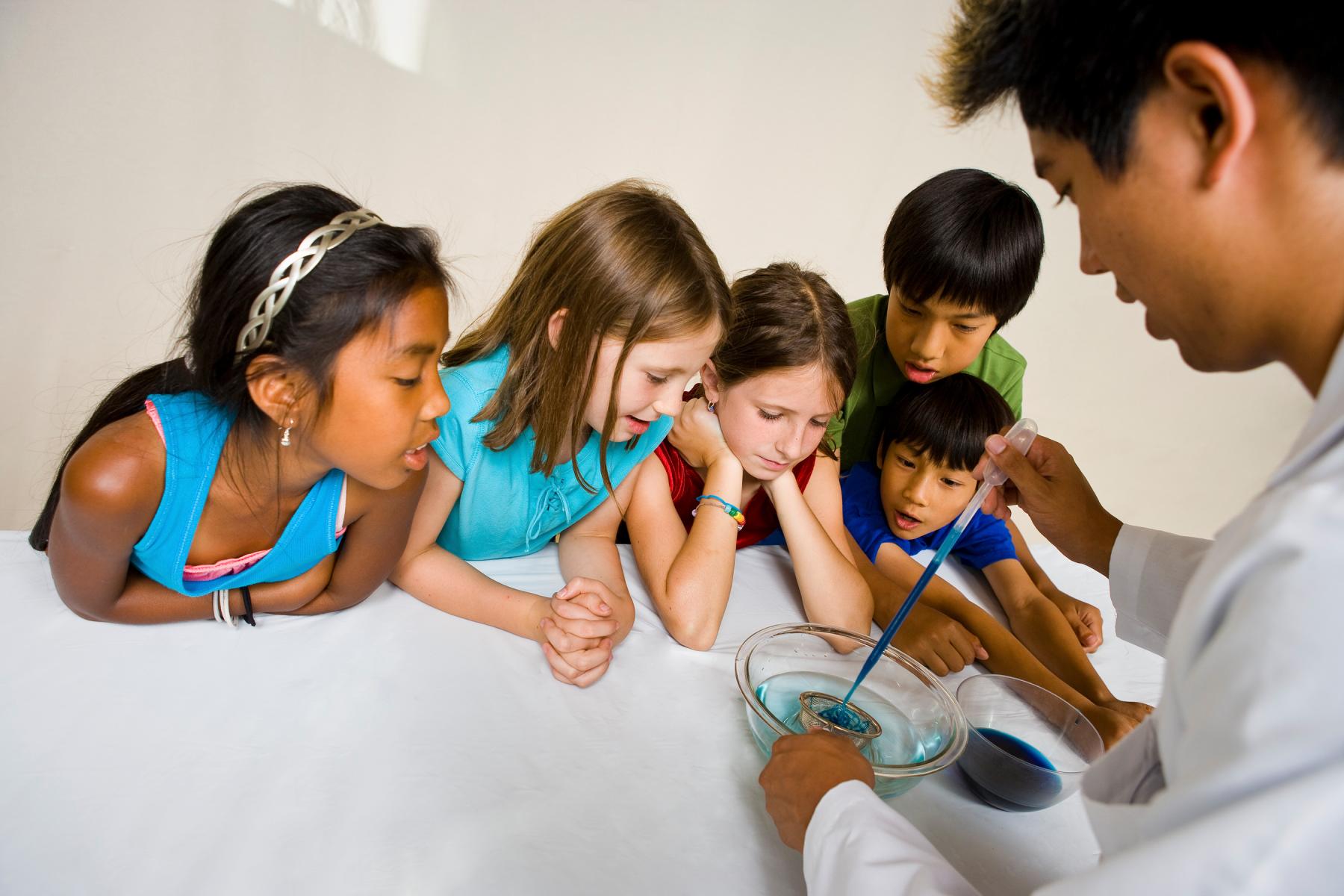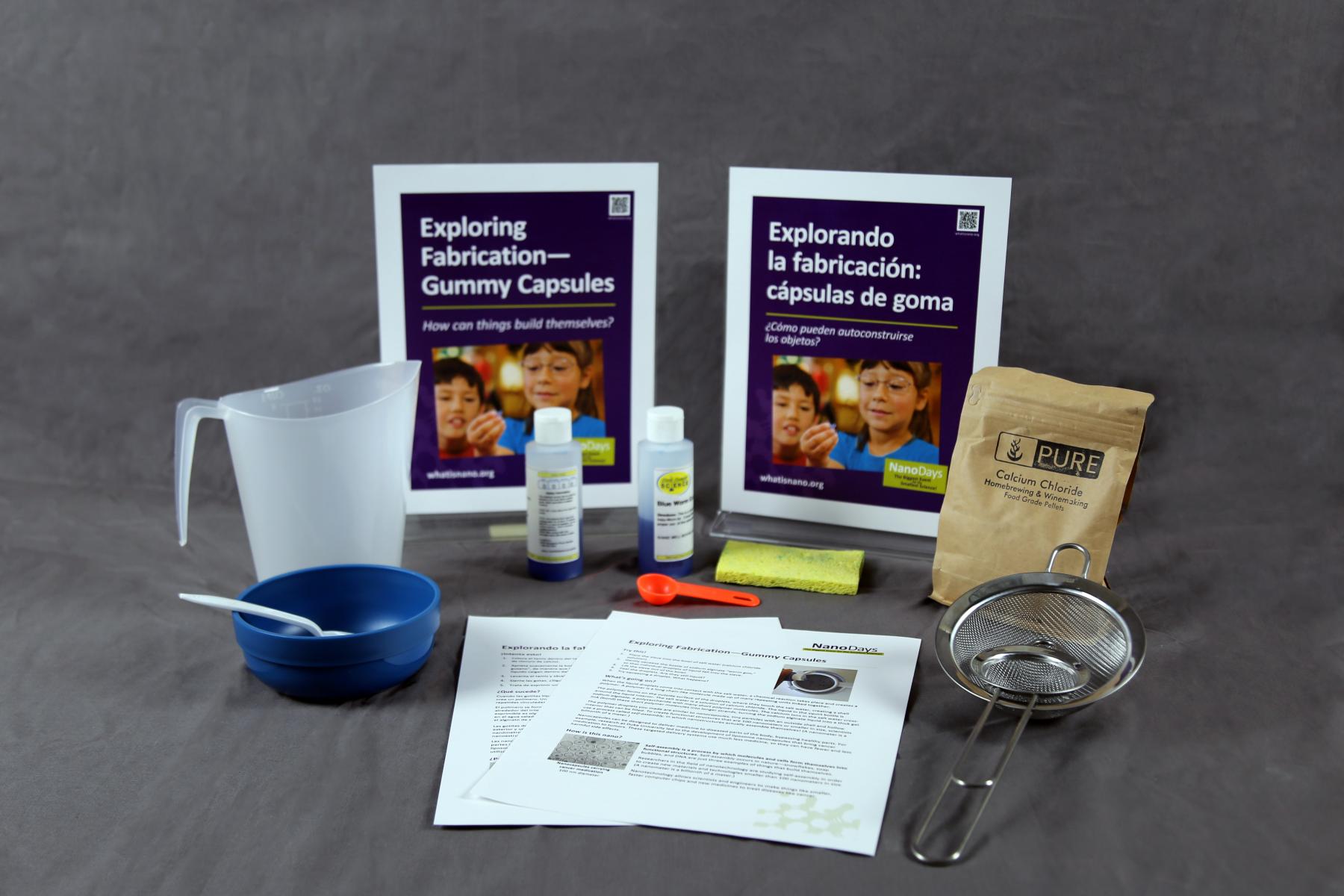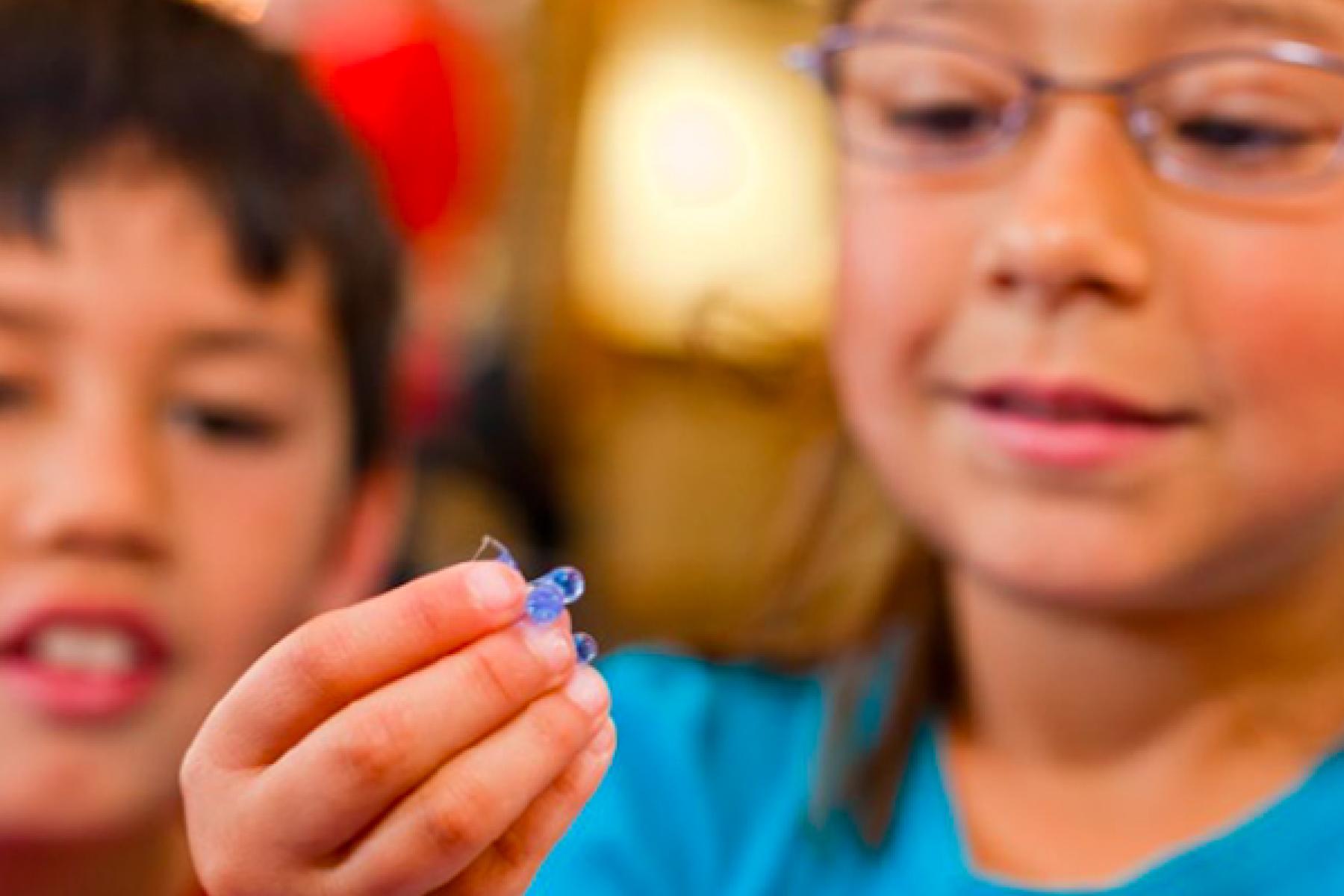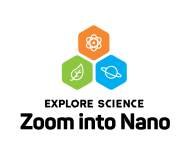DESCRIPTION
"Exploring Fabrication - Gummy Capsules" lets visitors make self-assembled polymer spheres. They learn that self-assembly is a process by which molecules and cells form themselves into functional structures, and that self-assembly is used to make nanocapsules that can deliver medication. "Explore Science - Zoom info Nano Gummy Shapes" (2016) version designed for groups and community outreach.
DESCRIPTION
"Exploring Fabrication - Gummy Capsules" lets visitors make self-assembled polymer spheres. They learn that self-assembly is a process by which molecules and cells form themselves into functional structures, and that self-assembly is used to make nanocapsules that can deliver medication. "Explore Science - Zoom info Nano Gummy Shapes" (2016) version designed for groups and community outreach.
TRAINING VIDEOS
OBJECTIVES
BIG IDEA
Self-assembly is a process by which molecules and cells form themselves into functional structures.
LEARNING GOALS
Self-assembly is a process by which molecules and cells form themselves into functional structures.
Self-assembly is used to make nanocapsules, which can deliver medication.
NANO CONTENT MAP
Scientists and engineers have formed the interdisciplinary field of nanotechnology by investigating properties and manipulating matter at the nanoscale.
Nanoscience, nanotechnology, and nanoengineering lead to new knowledge and innovations that weren't possible before.
DOWNLOAD FILES
- Exploring Fabrication Gummy Capsules - Guide (DOC)
- Exploring Fabrication Gummy Capsules - Guide (PDF)
- Exploring Fabrication Gummy Capsules - Sign (PDF)
- Packing instructions for the Gummy Shapes activity from the Explore Science-Nano kit (PDF)
- Exploring Fabrication Gummy Capsules - Materials (JPG)
- Exploring Fabrication Gummy Capsules - Sign (Spanish) (PDF)
- Exploring Fabrication Gummy Capsules - Guide (Spanish) (PDF)
Credits
Science Museum of Minnesota
Developed for the NISE Network with funding from the National Science Foundation under Award Numbers 0532536 and 0940143. Any opinions, findings, and conclusions or recommendations expressed in this product are those of the authors and do not necessarily reflect the views of the Foundation.
Creative Commons Attribution Non-Commercial Share Alike 3.0 United States (CC BY-NC-SA 3.0 US).
View more details

NISE Network products are developed through an iterative collaborative process that includes scientific review, peer review, and visitor evaluation in accordance with an inclusive audiences approach. Products are designed to be easily edited and adapted for different audiences under a Creative Commons Attribution Non-Commercial Share Alike license. To learn more, visit our Development Process page.




